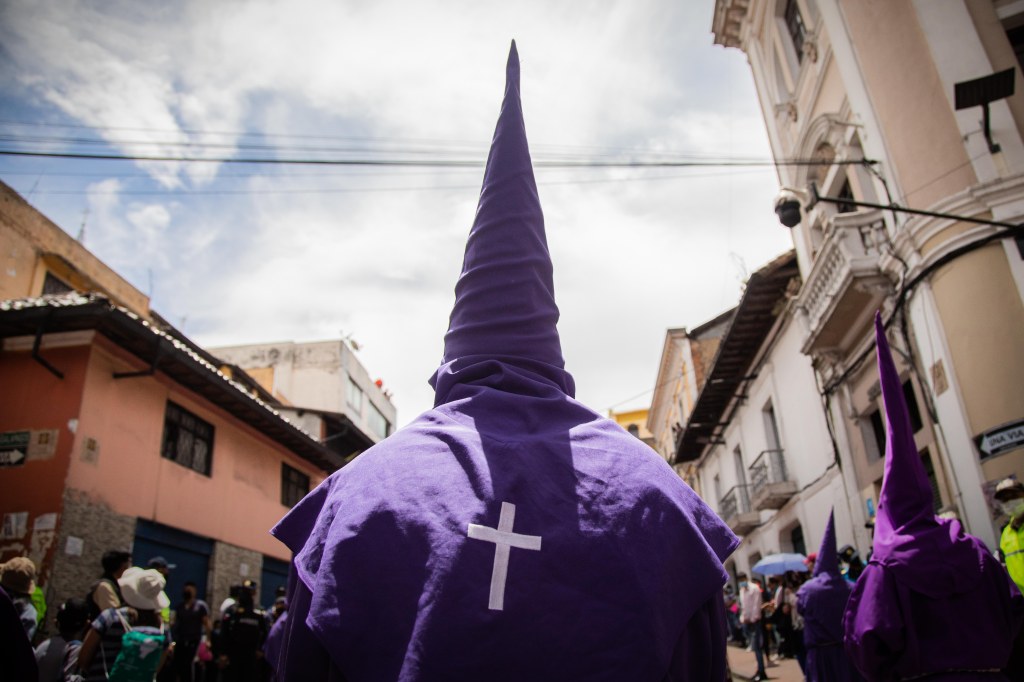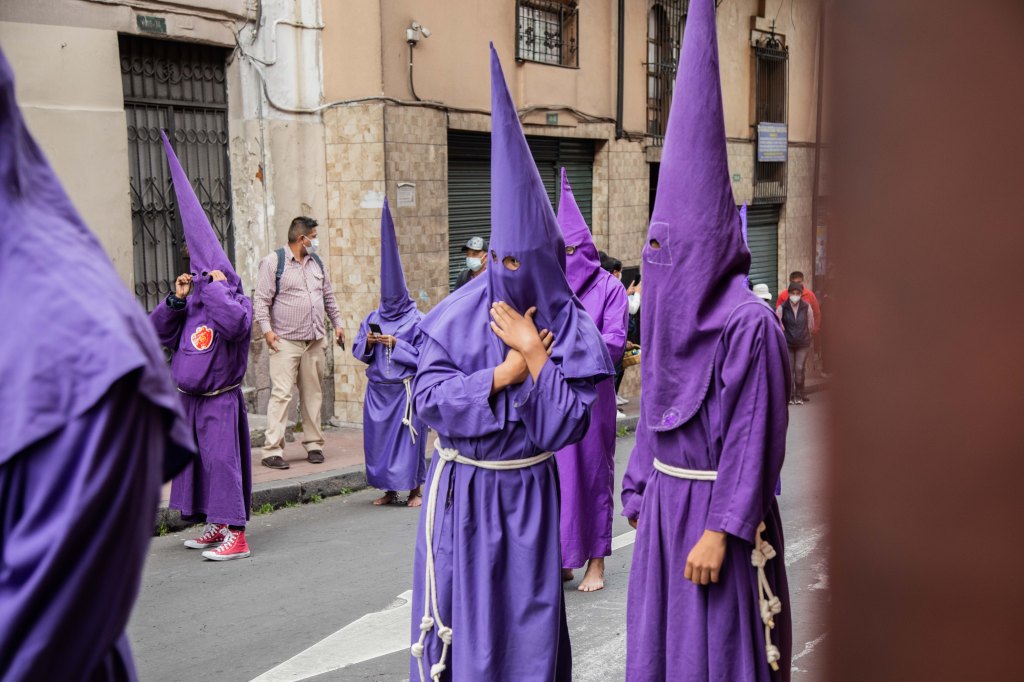
It’s a pleasantly clear morning in the Andean capital of Quito, Ecuador. Church bells ring in the air padded by the slow drones of liturgical melodies playing over hastily constructed loudspeakers. Tourists scurry between attractions in the city’s almost 500-year-old historic district. But today is a day unlike any of the other 364. It’s Good Friday meaning La Procesión de Jesús del Gran Poder (The Jesus of Great Power Parade) and the curious conical Cucuruchos of Quito.
Moments before you see them, the tips of their long purple pointed hoods crest the hill, wavering in step with their repentant pace and mildly distorted by the heat rising off the faded tarmac road. Their hoods slowly seemingly grow until the faces of the cucuruchos come into view. Two small eye-holes are the only gaps allowing a glimpse to the person underneath, but that’s the point.
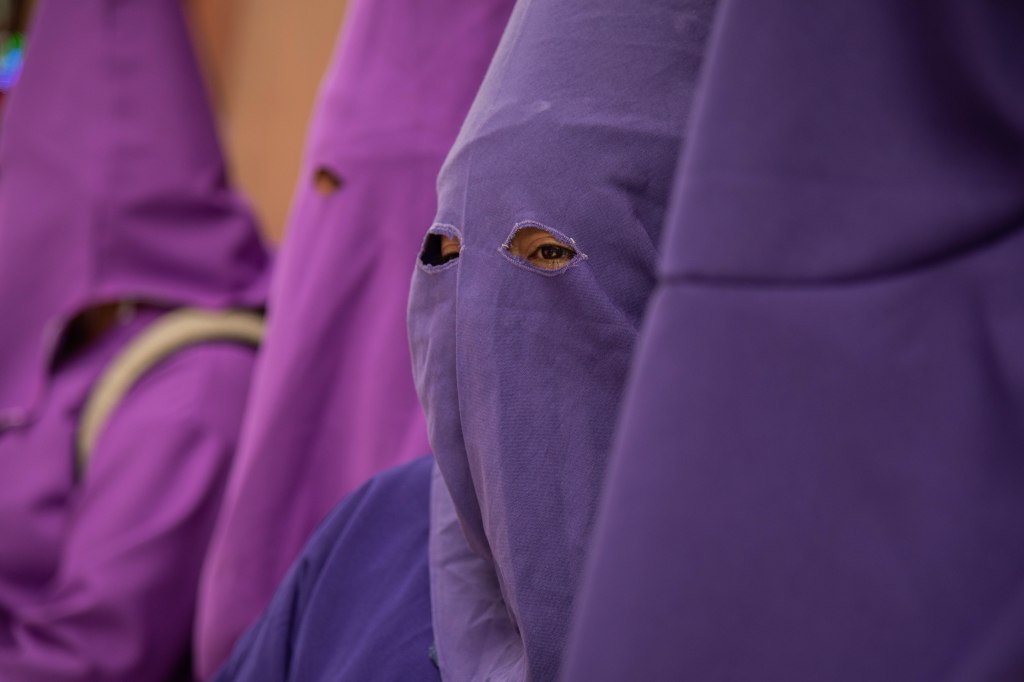
The entire parade is a sprawling act of both personal and collective atonement for sins against God. It spans five kilometers with many cucuruchos choosing to walk the route barefoot. Others add to their suffering, and supposedly elevate their atonement, by donning heavy chains, carrying heavier crosses, or whipping themselves with bushels of hortiga, an Andean stinging nettle.
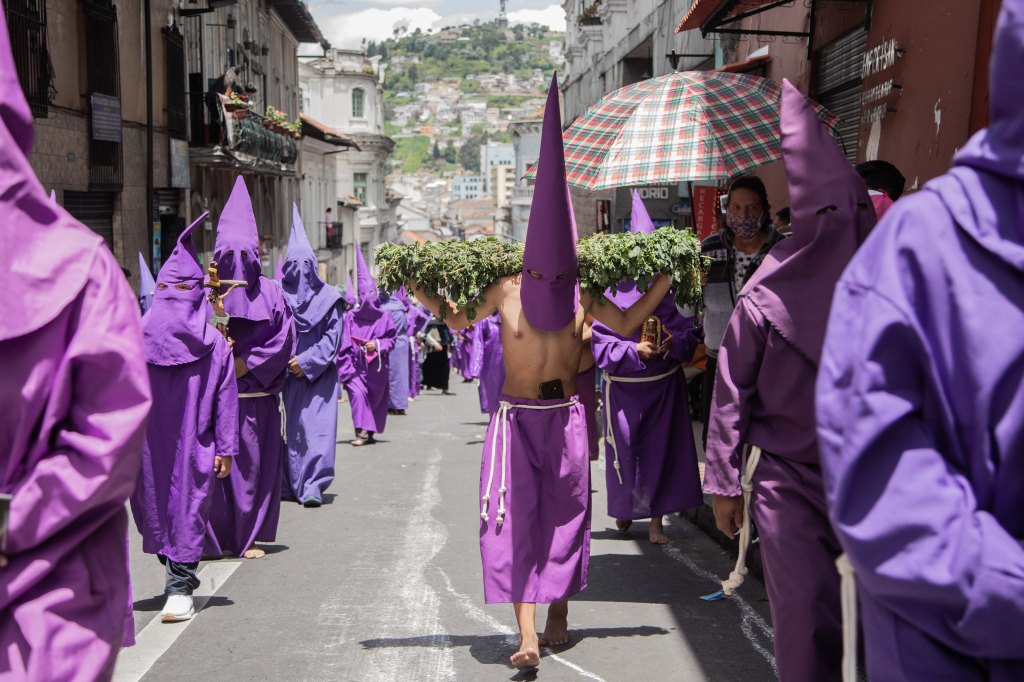
Throughout it all, the cucuruchos maintain the conical hoods pointing towards heaven. The masks are worn as a supposed attempt to maintain anonymity in order to keep the focus on the greatness of God rather than on those repenting. While the immersive expanse of purple is the Catholic liturgical color of penitence while the hood is said to represent humility.
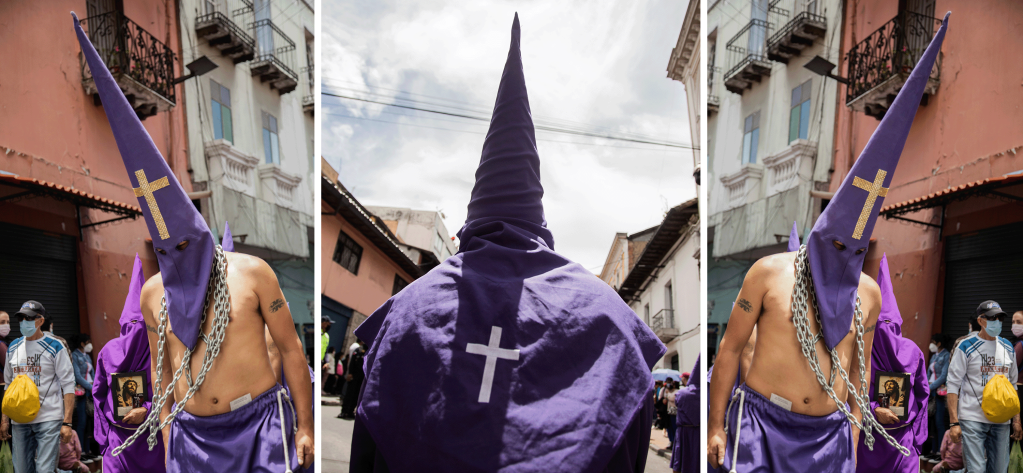
To many, the hoods evoke a modern imagery of the US American hate group the Knights of the Klu Klux Klan (KKK), but the cucuruchos long predate this well-known, but ultimately localized display of racism. The hoods of the cucuruchos can be traced back at least as early as the Spanish Inquisition starting in the 1400s. Men and women arrested for various forms of heresy against the Catholic church and, in the church’s view, against God were required to wear paper cone hats*, known as capirotes, in order to publicly humiliate them.
There are factions within the Catholic church who strongly believe in a theology of “salvation through penance” or that it is through both physical and psychological suffering as self-punishment for their sins against God, they can grow closer to Him. The capirote was adopted as a further form of self-humiliation by those inclined towards this theology. To this day these conical hoods, in a rainbow of colors, are used not only by the cucuruchos, but also by the Catholic brotherhoods of the Nazarenos, the Fariseos, and Saint Rochus to name just a few.
*not all that dissimilar to the more modern era ‘dunce’ hats used to punish and embarrass unruly schoolchildren in the early 1900s.
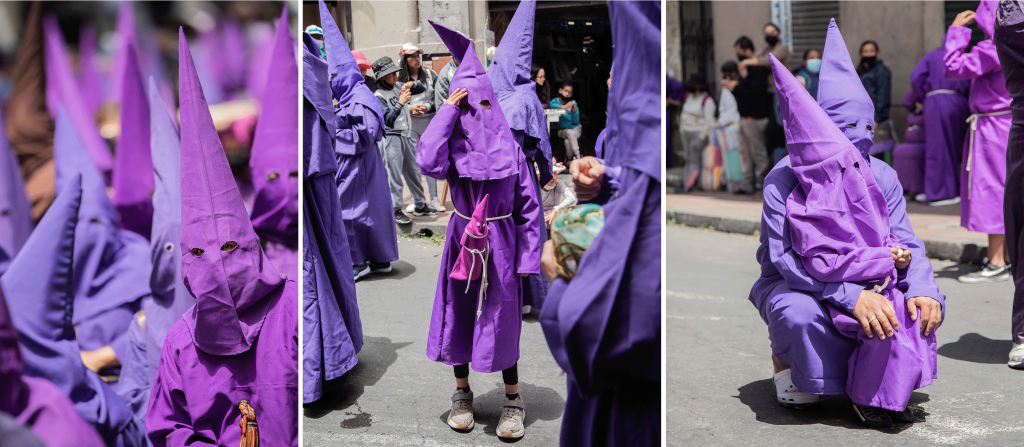
Spain was a busy place in the 1500s. On the mainland, the Inquisition was nearing its height as the Monarchy in tandem with Catholic church terrorized the populace. And in the Americas, Spanish troops terrorized the newly conquered colonies, looting untold riches under the guise of spreading their Catholic faith. This period of Spanish history made Spain incredibly rich while also enforcing their interpretation of faith across the Americas, including the theology of salvation through penance.
It was in this environment that the first iterations of the cucuruchos began to appear. In colonial Quito, devout Catholics would don these purple hoods and stand outside of churches enduring the elements and public derision as a self-punishment. It was also around this time, the vernacular began to change. The Ecuadorian hoods stopped being referred to as capirotes as they were in Europe, but rather as cucuruchos, the Spanish word for “cornet” — an object being in the shape of a cone.
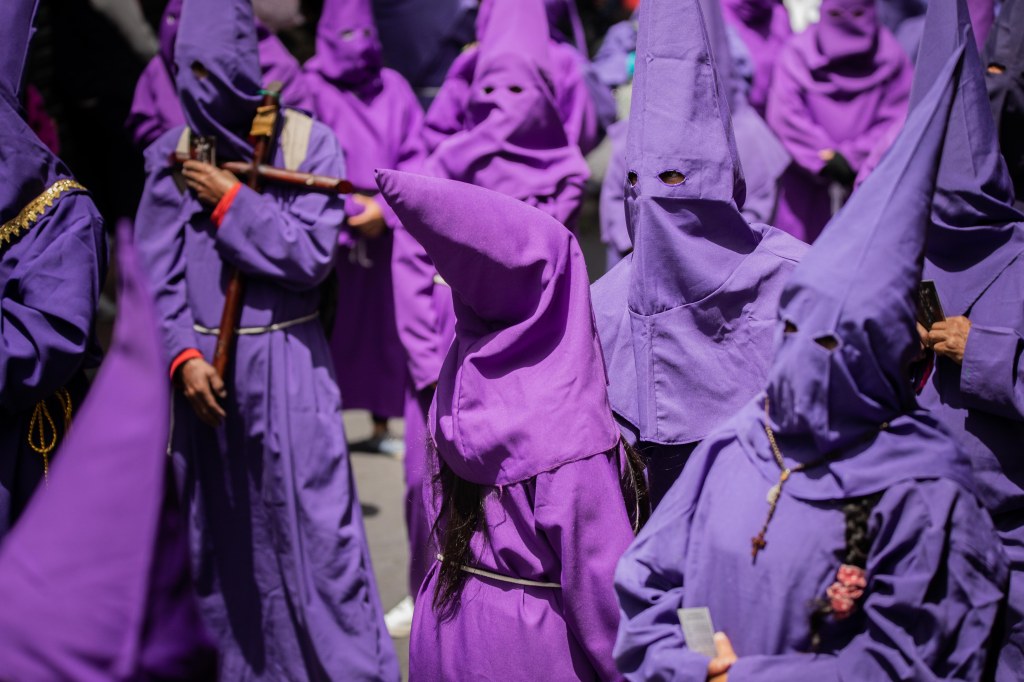
Over the next several hundred years, the Cucuruchos — the entire person having become identified for their hoods — began to congregate. By the 1800s, annual cucurucho parades during the Easter Holy Week were commonplace with everyone from peasants to Quito’s mayor marching.
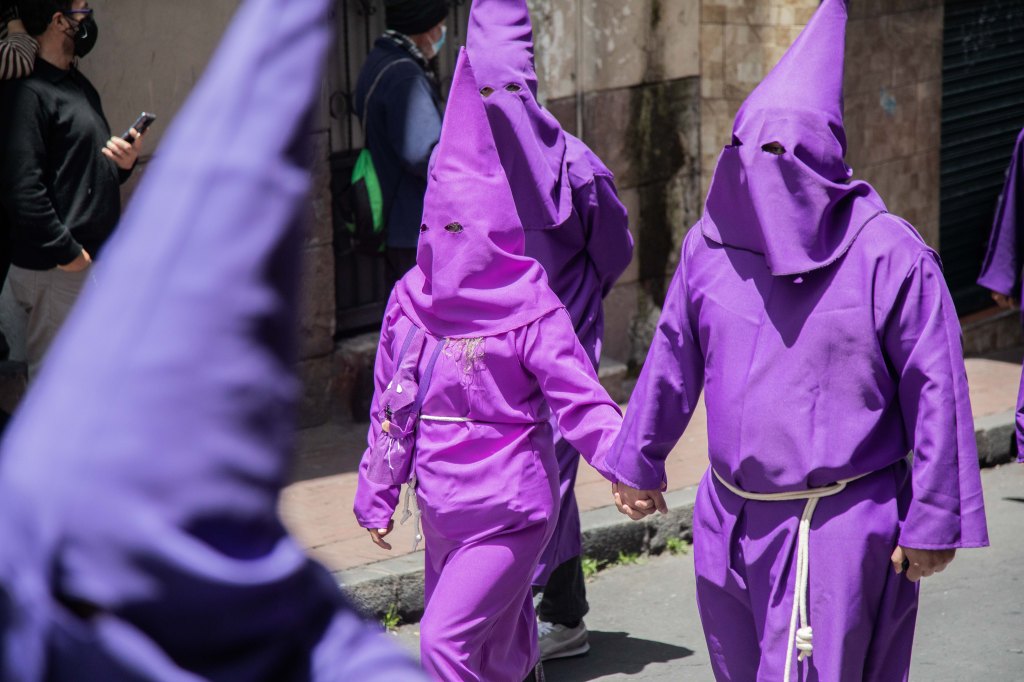
At this point in history, Catholicism and Ecuadorianism were intricately intertwined. In fact, to be considered an Ecuadorian citizen, the person first had to be Catholic. It was this way until the late 1800’s when a coup d’état took place and the victorious secular liberals, led by General Eloy Alfaro, not only erased the Catholic requirement for citizenship, but also went as far as to ban public expression of any faith*, including the cucurucho parades.
*freedom of private worship was encouraged
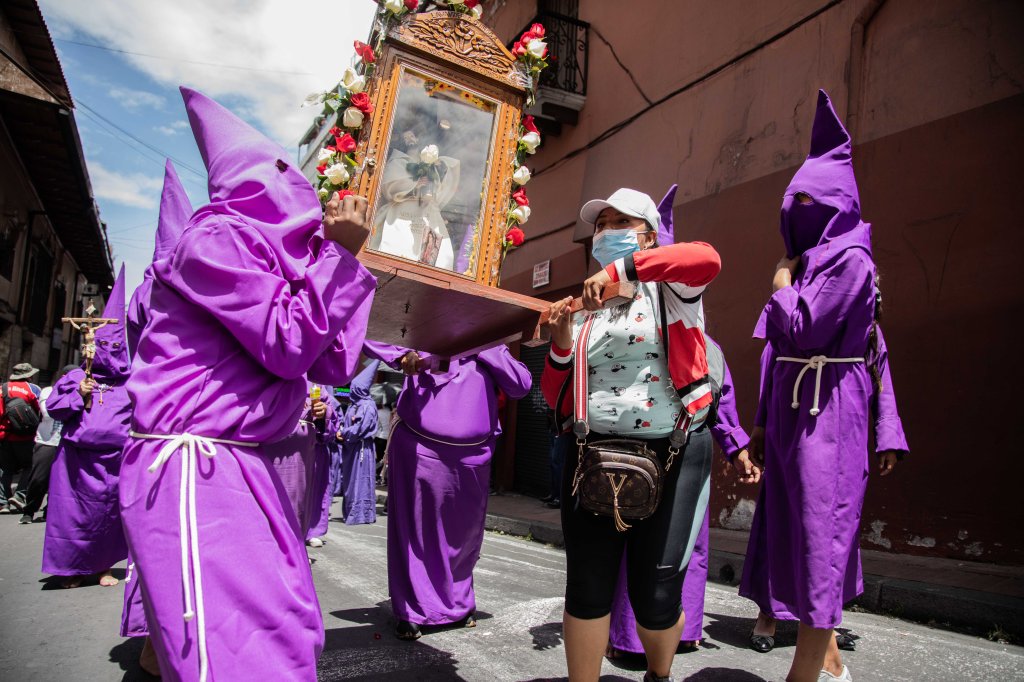
The ban was lifted by the mid-1900s and a priest by the name of Francisco Fernández resurrected the procession as a way to inspire the city’s devout. He repurposed a balsa wood carving of Jesus from the 1600s and paraded it through the streets under the name Jesús del Gran Poder. The name taken from the Biblical passage Matthew 28:18.
Then Jesus came to them and said, “All power in heaven and on earth has been given to me.”
It didn’t take long for the procession to become a staple in the Quitonian religious landscape. It took even less time for the cucuruchos to re-emerge en masse, putting their anonymous penance back on display. Since the first Procesión de Jesús del Gran Poder in 1961, the parade has been held every year with the notable exceptions of 2020 and 2021 during the global COVID-19 pandemic.
